Saturday Commentary and Review #164
Culture Clash in Arizona Semiconductor Facility, China Threatened With Sanctions by USA, "Authoritarian" Ireland, "The Zoomerwaffen", Indian-Americans and Caste
Every weekend (almost) I share five articles/essays/reports with you. I select these over the course of the week because they are either insightful, informative, interesting, important, or a combination of the above.
The stunning lack of arms manufacturing in western countries has been a big story in the media for almost a year now thanks to the Ukraine’s armed forces and their inability to evict Russian soldiers from their country, despite overwhelming western backing. The fact that Russia alone is outproducing all of NATO in artillery shell production is serious cause for concern. There are moves to close this gap, but they are too tepid at present.
The significance of manufacturing came to the fore during the COVID'-19 era, as supply chains were stretched globally, and many countries realized just how important domestic production was…..especially when it came to national security. Nowhere was this more evident than in chip manufacturing, an industrial sector where East Asia dominates the global market, and the Taiwanese are the leaders. Chips are just as important to our lives as weapons are. We cannot run our economies (nor even our daily lives) without a secure supply of processing chips. They are critical to our security and our daily existence.
This belated-awareness led the US Congress to pass the CHIPS and Science Act that authorizes the spending of billions of dollars to boost research into and manufacturing of semiconductors in the USA. This was part of a larger initiative to drive an industrial policy to prepare the USA to take on China in the near future. You can read about this effort by click the link below:
TSMC, the Taiwanese giant that is the world’s leading chip manufacturer, agreed to invest in both R&D and manufacturing in the USA at the request of US officials. This led them to construct a giant facility just outside of Phoenix, Arizona. The plan is to have up to three FABs (fabrication plants) that will churn out high quality chips for use in things ranging from Apple Phones to F-35 fighters.
This project is being touted as both critically important and a success. It certainly is important, but the jury is out as to whether it will be a success. This in-depth look at the TSMC facility in Arizona informs us that the culture clash between the Taiwanese managers and staff and their American colleagues is putting the entire effort into question:
Over the past four months, Rest of World spoke with more than 20 current and former TSMC employees — from the U.S. and Taiwan — at the Arizona plant. All of them requested anonymity because they were not authorized to speak to the media or because they feared retaliation from the company. In February, Rest of World traveled to Phoenix to visit the growing TSMC complex and spend time with the nascent community of transplanted Taiwanese engineers.
The American engineers complained of rigid, counterproductive hierarchies at the company; Taiwanese TSMC veterans described their American counterparts as lacking the kind of dedication and obedience they believe to be the foundation of their company’s world-leading success.
Some 2,200 employees now work at TSMC’s Arizona plant, with about half of them deployed from Taiwan. While tension at the plant simmers, TSMC has been ramping up its investments, recently securing billions of dollars in grants and loans from the U.S. government. Whether or not the plant succeeds in making cutting-edge chips with the same speed, efficiency, and profitability as facilities in Asia remains to be seen, with many skeptical about a U.S. workforce under TSMC’s army-like command system. “[The company] tried to make Arizona Taiwanese,” G. Dan Hutcheson, a semiconductor industry analyst at the research firm TechInsights, told Rest of World. “And it’s just not going to work.”
The culture clash is evident as it is made front and centre in this report. The most thing to realize is that this entire effort is an investment by TSMC to stay on the USA’s good side. They will take a hit in profit margins, but there is a bigger picture here.
It’s a massive collection of facilities:
Next to the office building are the incomplete manufacturing facilities. Originally slated to open in 2024, the facilities resemble giant stadiums. Once complete, the entire complex will cover 1,100 acres, or the equivalent of 625 football fields.
For those who don’t know what TSMC is all about, here’s how it got its start:
TSMC got its start thousands of miles away from Arizona’s arid desert — on the northern coast of Taiwan. Morris Chang, a U.S.-educated chip engineer who spent 25 years at Texas Instruments, founded the company in 1987. He did so at the invitation of the Taiwanese government, which was eager to boost the island’s economy at the time.
In the 1980s, companies like Intel and Texas Instruments designed and made their own chips. TSMC set out to do something different. Chang’s company would focus solely on contract manufacturing: Customers would send designs, and engineers in the company’s fabrication plants (also called “fabs”) worked to perfect production methods, minimize the number of defective chips, and reduce costs.
The model proved a success. “All of a sudden it’s really efficient,” Hutcheson, of TechInsights, told Rest of World. “You can learn to become a plumber. But at the end of the day, it’s more efficient for you to focus on what you make money doing and then pay someone else to come do [the plumbing].”
The outsourcing craze literally made TSMC what it is today:
Meanwhile, chip manufacturing collapsed in the U.S. and Europe, and migrated to East Asia, drawn by government incentives. Hutcheson said the high costs of building new facilities prevented new companies from joining the competition and eventually solidified TSMC’s dominance.
TSMC has since grown into a $660 billion giant that has allowed “fabless” chip designers such as Nvidia and Apple to flourish. The company is now able to cram more computing power into less space than almost any other chip manufacturer. Samsung and Intel are still trailing behind the Taiwanese company.
TSMC is also considered Taiwan’s most important company, with Taiwanese people dubbing it a “divine mountain that guards the nation.” The world’s dependence on TSMC, locals reason, could even incentivize the West to defend Taiwan from a potential invasion from China. The loss of Taiwan and with it TSMC — the thinking goes — would result in a global tech meltdown.
For those interested in the geopolitical story around TSMC/chip production, etc., click on this link below:
Back to the report:
TSMC insiders told Rest of World the key to the company’s success is an intense, military-style work environment. Engineers work 12-hour days, and sometimes weekends too. Taiwanese commentators joke that the company runs on engineers with “slave mentalities” who “sell their livers” — local slang that underscores the intensity of the work.
Up until the pandemic, it made sense for TSMC to concentrate its operations in Taiwan, where it enjoyed unwavering government support, low operating costs, and access to the island’s top talents. Outside a small plant in Washington and two plants in mainland China that made chips with older technologies, the company had little interest in international expansion.
That changed in the late 2010s, as governments came to realize the geopolitical importance of the semiconductor industry and launched a race to attract chip manufacturing giants. Around 2019, the Trump administration started courting TSMC to build a larger and more advanced plant in the U.S. The pandemic further underscored supply-chain weak points. “The world has changed,” Sujai Shivakumar, director of the Renewing American Innovation Project at the think tank Center for Strategic and International Studies, told Rest of World. Depending on chips from a faraway country on China’s doorstep suddenly felt precarious. “What was purely — from an economics point of view — an efficient solution is no longer an efficient solution because of the geopolitics,” Shivakumar said.
In May 2020, then U.S. Under-Secretary of State Keith Krach announced that TSMC had agreed to open a $12 billion facility in Arizona. The site would create thousands of jobs, spur cutting-edge research, and attract more companies on the semiconductor supply chain to move to the U.S. Chips coming out of the plant were expected to power smartphones, 5G base stations, and advanced F-35 fighter jets. “This means that chips critical to our lives and national security will once again be made in America,” Krach said.
TSMC’s investment, Krach later told U.S. media, inspired policymakers to extend incentives to the entire chip industry. In the summer of 2022, the Biden administration passed the CHIPS Act, which designated $53 billion to developing the domestic semiconductor industry. Later that year, TSMC said it would build a second fab at the same site in Phoenix, increasing its total investment to $40 billion.
This all sounds great. But can they pull it off? TSMC’s founder is bearish on its prospects:
Despite the commitment from both TSMC and Washington, issues related to exporting a Taiwanese-style work culture to the U.S. swirled from the outset. Morris Chang, who retired in 2018 but remains the public face of the company and the godfather of Taiwan’s semiconductor industry, cast doubts on the Phoenix initiative.
When Nancy Pelosi visited Taiwan in 2022, Chang lectured the House speaker on the challenges the U.S. would face in mastering the microscopic precision required in chip production. Chang has since also warned against the lack of manufacturing talent in the U.S., and how hard it would be for Taiwanese managers to supervise Americans. Speaking to the Vying for Talent podcast in April 2022, Chang concluded that the U.S.’ attempt to onshore semiconductor manufacturing would be “a very expensive exercise in futility.”
Day-to-day challenges:
But the challenges were immediately apparent, too. At Fab 18, nearly all communication took place in Taiwanese and Mandarin Chinese, the two most widely spoken languages in Taiwan. The Americans found it difficult to understand meetings, production guidelines, and chatter among local engineers. In theory, every American was supposed to have a Taiwanese buddy — a future Arizona worker who would help them navigate the workplace. But the Americans said their buddies were often too busy to help with translations, or else not familiar enough with the technical processes because they were freshly transferred from other production lines.
Many trainees, including Bruce, relied on Google Translate to get through the day, with mixed results. Technical terms and images were hard to decipher. One American engineer said that because staff were not allowed to upload work materials to Google, he tried to translate documents by copying Chinese text into a handwriting recognition program. It didn’t work very well.
more:
TSMC’s work culture is notoriously rigorous, even by Taiwanese standards. Former executives have hailed the Confucian culture, which promotes diligence and respect for authority, as well as Taiwan’s strict work ethic as key to the company’s success. Chang, speaking last year about Taiwan’s competitiveness compared to the U.S., said that “if [a machine] breaks down at one in the morning, in the U.S. it will be fixed in the next morning. But in Taiwan, it will be fixed at 2 a.m.” And, he added, the wife of a Taiwanese engineer would “go back to sleep without saying another word.”
During their visit, the Americans got a taste of the company’s intense work culture. To avoid intellectual property leaks, staff were banned from using personal devices inside the factory. Instead, they were given company phones, dubbed “T phones,” that couldn’t be connected to most messaging apps or social media. In one department, managers sometimes applied what they called “stress tests” by announcing assignments due the same day or week, to make sure the Americans were able to meet tight deadlines and sacrifice personal time like Taiwanese workers, two engineers told Rest of World. Managers shamed American workers in front of their peers, sometimes by suggesting they quit engineering, one employee said.
A funny bit:
As training went on, tensions mounted. U.S. engineers told Rest of World that some Taiwanese male engineers had calendars with bikini models on their desks and occasionally shared sexual memes in group chats. A female American colleague, according to an American trainee who witnessed the conversation, asked a Taiwanese engineer to remove his computer wallpaper depicting a bikini model.
And a dispute:
In mid-2023, TSMC announced delays in the construction of its first facility in Arizona, dubbed Fab 21 — production at the facility would start in 2025 instead of 2024 as planned. TSMC blamed a shortage of skilled workers. Construction unions, however, complained of safety hazards and questioned if TSMC was using this as an excuse to bring in cheap labor from Taiwan.
I am optimistic that these culture clashes will be ironed out in due time. A more difficult hurdle will be profitability, especially in comparison to the production facilities located in Taiwan.
This is a very bullish view of the future. It’s one that I do not share even if I believe that the culture clash at TSMC Arizona can be resolved.
(ed. I apologize for the length of the first segment in this weekend’s SCR, but it is quite important…at least in my opinion.)
Everything about TSMC’s arrival in Arizona has to do with China and the US efforts to contain it. Logic would dictate that the Americans would seek to split the Chinese from the Russians, as the Ukraine is the most active (and dangerous) theatre of conflict at present. Hubris views logic as belonging to the realm of mere mortals, which is why the USA is more than happy to instead threaten, bully, and cajole Beijing in order to get its way.
The Americans are not pleased with Beijing’s support of Moscow’s efforts in Ukraine. US Secretary of State Anthony Blinken went as far as to warn Beijing yesterday, informing the Chinese that “…if China does not take measures to solve the problem with its support of Russia, Washington will do it”.
This is big talk. The Wall Street Journal is reporting that the USA is threatening to cut off some of China’s biggest banks from the global financial system via targeted sanctions if they continue to aid Russia.
Will the Chinese acquiesce to US demands? Chee Meng Tan argues that it won’t:
The United States’ top diplomat described China as a “prime contributor” of weapons-related technology to Russia, saying Beijing was fueling the “biggest threat to European security since the end of the Cold War.”
Blinken gave further details when he landed in Beijing this week: While China has complied with US requests not to sell arms to Russia during the Ukraine war, the list of items it sells that could have military use is extensive. They include semiconductors, drones, helmets, vests, machine tools and radios.
Apparently, the Chinese resupply of the Russian industrial complex also undermines Ukrainian security. And unfortunately for China, Chinese support of the Kremlin’s war effort is likely to earn Chinese firms sanctions from the US government.
Why is Beijing aiding Moscow so ardently even when imminent US sanctions are likely to aggravate its problems with an already weak economy? One word: survival.
The Chinese are fully aware that a Russian loss in Ukraine means that they are next. Why not support the Russians and keep American eyes focused on that conflict, instead of allowing them to turn their gaze towards China?
China realizes that if it wishes to break the US monopoly on power, it can’t go about it alone. Aside from requiring a strong Russia to help reform the US-dominated international system, China needs Russia for its long-term survival.
There is a famous Chinese idiom: “Once the lips are gone, the teeth will feel the cold.” (The meaning is that when two things are interdependent, the fall of one will affect the other.) Right now, the West is dealing with the Russian rogue state. But if Russia falls, Beijing realizes, the West could consolidate its resources to deal with the “Chinese threat.” Therefore, Beijing must aid Moscow.
The author of this article is a professor at a British university, and the publisher is an Atlanticist outfit, so “buyer beware” regarding this next excerpt:
Not surprisingly, there’s lingering distrust on both the Chinese and Russian sides, and Chinese experts fear that Russia may prioritize its own interests over bilateral ties.
For instance, if a renewed Trump presidency does occur, the US may express less support for Ukraine and improve ties with Russia. In such a scenario, the Kremlin may prioritize better ties with the West and may withhold support for China’s struggle against the US.
Incidentally, China’s distrust of Russia and existential concerns may have fueled a recent high-level visit from Beijing to Pyongyang, North Korea. On April 13 2024, China’s top legislator and third-most-senior Chinese communist leader, Zhao Leji, paid an official visit to Pyongyang.
During the meeting with North Korean strongman Kim Jung Un, Zhao claimed that the meeting was meant to reaffirm good relations and deepen bilateral cooperation between the two nations.
There is a recurring theme in Atlanticist circles that Beijing can be pried away from Moscow due to “historic disputes”. The most humourous ones involve a supposed Chinese desire to “annex Siberia”.
It is my opinion that Atlanticist circles, especially those in the USA, are presently afflicted with hubris, leading them to make bad decisions…such as threatening to sanction Chinese financial institutions.
A recurring theme of this Substack is the ever-widening divide being rulers and ruled in western countries. Last weekend’s activities in US Congress are testament to this (I will be writing something about this soonish).
Western liberal democracies all seem to be in a state where the institutional parties continue to converge ever more closely on more and more key issues, despite growing popular opposition from the citizens of these countries. Migration is the most obvious example, but there are many others.
Migration at present is tearing Ireland apart, but you wouldn’t know it judging by their political system, their parliament (Dail), or their media. The country’s elites are aligned to an incredible degree, with their pursuit of an illiberal ‘liberal’ authoritarian ruling system on the cusp of success.
Seaghán Breathnach argues that Ireland has become an authoritarian state:
The remarkable thing about Ireland is not just the authoritarian nature of its government, but the fact that this is largely unopposed. There exists a uniformity between government, opposition, government-organised non-governmental organisations (GONGOs), and mainstream media. This has led to an alignment of the various sources of power where there should be checks and balances between them.
The political consensus has come about because the political parties Fianna Fáil and Fine Gael have, at leadership level, adopted left-wing positions on every issue. While these parties used to possess socially conservative and/or economically liberal ideas, and continue to retain members who hold such views, they have funded GONGOs indistinguishable from left-wing activists over the last 30 years.
These organisations serve as quasi-official advisory groups, their various causes helped along by the tax-funded, far-left propaganda broadcaster, Radió Telefís Éireann (RTÉ). While these parties created and support these GONGOs, they are also browbeaten into embracing the ever more radical policies which these organisations demand, particularly because of propagandising by RTÉ.
Media-driven politics.
The lay of the land:
Within the Irish parliament (Dáil Eireann) there are now three distinct ideological blocs. The first is composed of the three current government parties: Fine Gael, Fiánna Fail, and the Green Party, as well as the three largest opposition parties: Sinn Fein, Labour, and the Social Democrats. This illiberal liberal bloc supports permissiveness, multinational corporations, the European Union, mass immigration, and ‘hate speech’ laws. This bloc encompasses approximately 82% of the Irish parliament if one includes backbenchers who will ultimately follow their party whip.
The second bloc—and main opposition to the first—are the sixteen members of parliament found among three opposition caucuses, who are either independents or in the Áontu or Independent Ireland parties. This patriotic, pro-family bloc favours the family, small and medium enterprises, a welfare state that distinguishes between deserving and undeserving recipients, and opposes crime and mass immigration. This bloc encompasses 13% of the Irish parliament. The third parliamentary bloc is composed of the Solidarity-People Before Profit party and a few like-minded independents. These make up approximately 5% of Dail Eireann.
The illiberal liberals are supported by the mainstream media such as RTÉ, the Irish Times and the Irish Independent, while the family-patriots are supported by Gript Media. The main hostility in Irish politics is not to be found among the fake alternative parties within the illiberal liberal bloc but rather between it and the family-patriot bloc. This can be seen in the mainstream hostility towards Gript Media.
This real division in Irish politics was demonstrated in the recent referendums pertaining to the family and to care, during which the illiberal liberals in government and opposition all supported the proposed amendments while the family-patriots provided the sole opposition.
The key charge:
The mainstream parties do not represent or even purport to represent the Irish people but rather the interests of GONGOs, multinational corporations, the EU, and the U.S. government. Decisions are therefore done to—rather than on behalf of—the Irish people.
The incredibly controversial (but you wouldn’t know it if you only consumed Irish mainstream media) hate speech bill:
Expressions of opposition from the public are ignored and will now be suppressed by means of the new ‘hate speech’ bill, which will criminalise the expression or possession of facts or opinions with which the government disagrees. The impending Criminal Justice (Incitement to Violence or Hatred and Hate Offences) Bill will, based on a list of “protected characteristics,” criminalise inciting “hatred” against persons or groups; preparing or possessing material thereto; or condoning, denying, or grossly trivialising genocide, crimes against humanity, or war crimes. Controversially, the bill has self-referential and nebulous definitions of “hatred” and “gender.”
The general tenets of the bill are the transposition of EU law—Council Framework Decision 2008/913/JHA. Additional elements have been added by Ireland’s extremely illiberal Justice Minister Helen McEntee, such as that if a person possesses material that is deemed likely to incite violence or hatred, they will be presumed to be in breach of the law unless they can prove their innocence. Another provision stipulates that a private citizen will be required to give a police officer the password to their computer on request.
This bill entails the emergence of an openly totalitarian government which views the public as serfs. The state realised during the COVID lockdowns that many Irishmen are spiritless people who will believe the crudest propaganda and who welcome their own servitude. A state which criminalises the expression of opposition to its authoritarianism leaves available to the public only direct action.
His conclusion:
Likewise, there is total unanimity in support of the Ukrainian war effort, with a seeming ignorance of the fact that this is a U.S. proxy war and despite the strain that hosting upwards of 100,000 Ukrainians has placed on the country. Irish politicians and media are remarkably uneducated which produces a self-absorbed class which knows just what to think about everything, so long as these thoughts are wrongheaded. From global warming to COVID lockdowns, and from mass immigration to the Ukrainian war, the political and media class invariably adopt and promote the next big thing.
Ireland has thus become, in effect, an authoritarian one-ideology state, enforced by a media-controlled government, and devoid of serious parliamentary opposition. Lacking the consent of the governed, it remains to be seen what will be the outcome of this confrontation between an increasingly authoritarian state and a supposedly freedom-loving citizenry.
The obvious question is: why do these parties retain so much support? The hate speech bill is indeed authoritarian, and the forcible introduction of migrant populations in communities across Eire is certainly not a popular one. But the case that Ireland is an authoritarian state requires a longer and more fleshed-out argument than the one provided here.
I have a bit to say about the campus protests currently taking place all across the USA, but I’ll save my thoughts for an upcoming essay to be published most likely next week.
In the meantime, I’ll share this take from
about the cohort she calls “The Zoomerwaffen”, and how liberal Jews upset at what is taking place asked for this to happen to them:But also we have to acknowledge that demands from Jewish students for special protections against hate speech, harassment, violence, and bigotry, while totally justified, tend to stick in the craw of other identity groups who have been the target of widespread vilification and hate on campus for years, right here in the United States.
The Zoomerwaffen are here and they are coming for the Jews—the same way their college came for the straight white males.
Her “J’accuse”:
Of course, this eruption of bigotry did not start on October 7th. This fire was lit by well-meaning liberals long ago—including, sorry, lots of Jewish progressive liberals, who cheered the new rules. The Tree of Decolonization must be watered by the blood of pale-skinned Americans.
Trigger warning: I’m talking about the perennial evergreen villain of academia—straight white men—but they’re not alone. It’s not just permitted but encouraged to openly discriminate against racial, religious, gender, and political minorities at these schools. You can say basically anything you want about:
White (non-Jewish) men
People who incorrectly think there are just two genders
Biological girls on sports teams who protest playing against men
Christian conservatives
Pro-life Catholics
Trump supporters on campus
It’s been totally kosher to violently attack, threaten, endanger, harass, discriminate against these kids wherever they are, but most acutely at Yale, Harvard, Columbia, Penn, and Stanford. Conservatives who dare to step foot on the sacred ground of elite institutions are screamed at, humiliated, buildings are torched (like when Ann Coulter dared to speak at Berkeley), and shouted down—even by DEI administrators whose entire fake job is about enforcing tolerance and inclusion!
At Stanford in 2023, the former chair of the law school’s DEI Department, Tirien Steinbach, led the protest against conservative Judge Kyle Duncan. Her highly trained young radicals screamed for his wife to be raped. At Stanford LAW school!
“Boomerang”:
Some people got mad at me for the above tweet. But I meant every word. Liberal Jews ARE finally waking up, at least the smart ones. I know secular Jews in L.A. who are Trump-hating feminists who are now completely radicalized post-Oct. 7th.
Good. But where were you when everyone was hating on white peepo?
more:
It must be wonderful to have powerful institutions and powerful people come to your rescue when you are under attack, vilified, persecuted, and shunned in places you thought were safe.
I want that for Jewish kids. For Jews everywhere, in fact. The Jews are perhaps the world’s most persecuted people in history, after all. 80 years ago, millions were exterminated in an orgy of racial and ethnic violence in Eastern Europe.
I just wish it also applied to other demographics that are on the pre-genocide track.
Today, Israelis are clinging to their homeland in the teeth of constant threat on all sides by vicious Islamic terror gangs who seek to cleanse the land “from the river to the Sea.”
You know what’s just as genocidal as “from the River to the Sea”? Saying things like “abolish whiteness.” “Whiteness is evil.” “Dismantle white supremacy.” “America is an evil country.” This is genocidal language that lays the groundwork for dehumanizing innnocent people because of their ethnic origins. It’s highly dangerous, yet it was the key mainstream message our culture was sending, in all directions, since 2020.
And now this hydra of hate is turning on a group that thought they were protected under the minority protections given to other identity groups.
No more.
Peachy is engaging in some schadenfreude. Can you blame her?
We end this weekend’s SCR with a look at how India’s deep-rooted caste system is being suppressed in the USA, and how its genetic legacy will most likely be all that remains of it:
There are three intersecting factors at play in modern American society that makes caste relevant. First, Indian Americans are now publicly prominent. Long the most educated and wealthiest ethnic group in the U.S., in the past few decades they have become prominent in politics and business. Not only are the CEOs of Google, Microsoft, and Starbucks Indian American, but two Republican candidates for the presidential nomination—Vivek Ramaswamy and Nikki Haley—were Indian American, while the current Vice President, Kamala Harris, is the daughter of an Indian woman. They are now the quintessential visible minority at the commanding heights of American culture.
Second, the caste system is inextricably linked to Indian, and more precisely Hindu, identity in the minds of most Americans. In fact, most elementary school treatments of Indian history and society include a section on caste. And third, the hierarchical caste system is a perfect foil for the current American elite’s fixation on social panics and policies targeted at grades of status. India’s caste system is the absolute inversion of the egalitarian and flat utopia envisioned by modern social justice acolytes—though ironically both are highly identitarian.
Though the caste system dominates much of Indian life, it does not dominate Indian American life. At slightly over 1% of the U.S. population, only about half of Indian Americans identify as Hindu, the religion from which the broader categories of caste, or varna, emerge. While caste endogamy—marrying within one’s caste—in India remains in the range of 90%, in the U.S. only 65% of American-born Indians even marry other people of subcontinental heritage, and of these, a quick inspection of The New York Times weddings pages shows that inter-caste marriages are the norm. While tensions between the upper-caste minority and middle and lower castes dominate Indian social and political life, 85% of Indian Americans are upper-caste, broadly defined, and only about 1% are truly lower-caste. Ultimately, the minor moral panic over caste discrimination among a small minority of Americans is more a function of our nation’s current neuroses than the reality of caste in the United States.
I have learned quite a lot from
(the author of this piece) over the years. Click here to read the rest.Thank you once again for checking out my Substack. Hit the like button at the top or the bottom of this page to like this entry, and use the share and/or res-stack buttons to share this across social media. Leave a comment below if the mood strikes you to do so. And don’t forget to subscribe if you haven’t done so already.
And don’t forget to join me on Substack Notes!




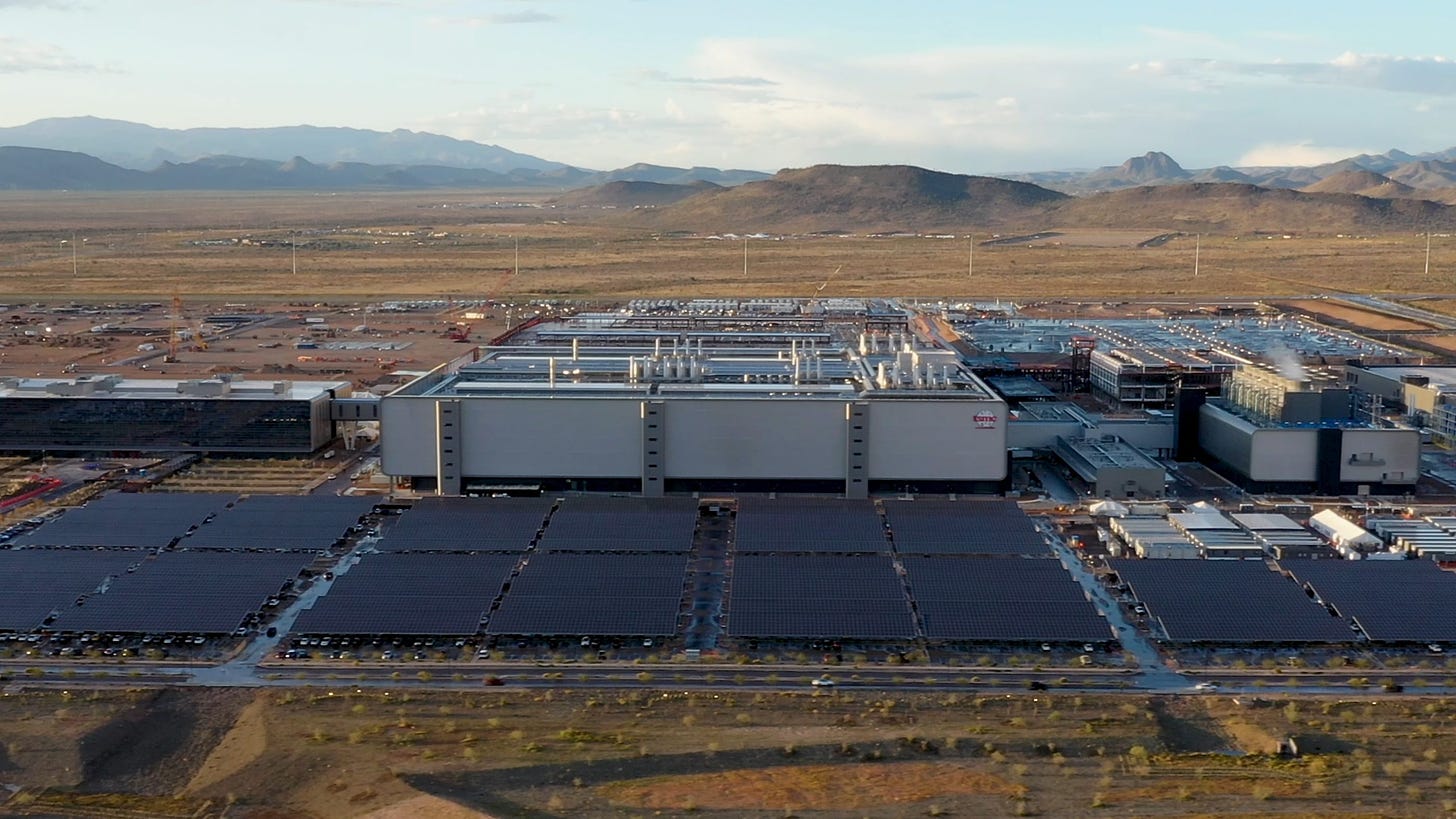
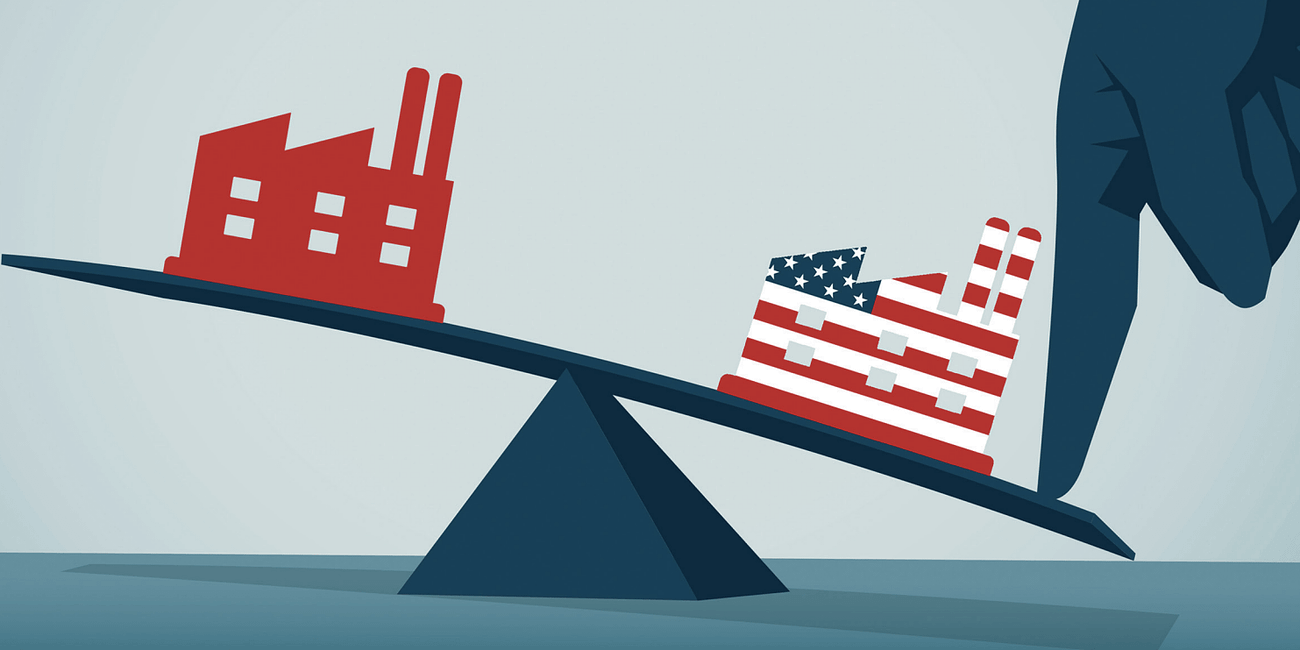



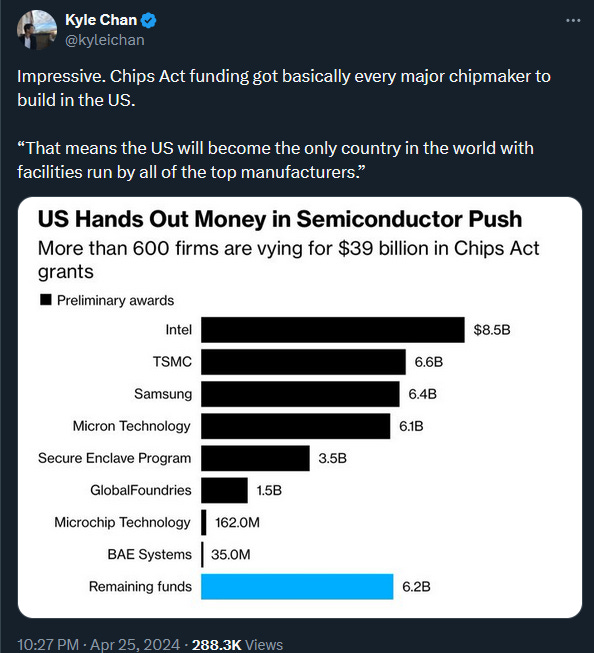
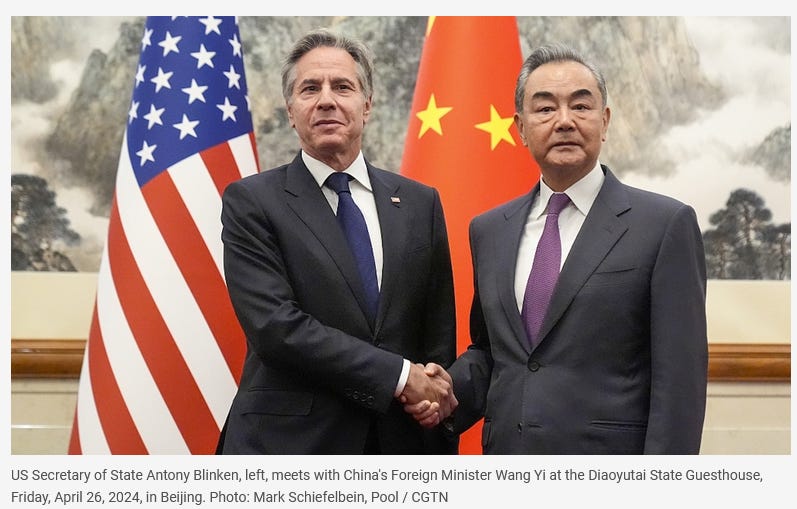
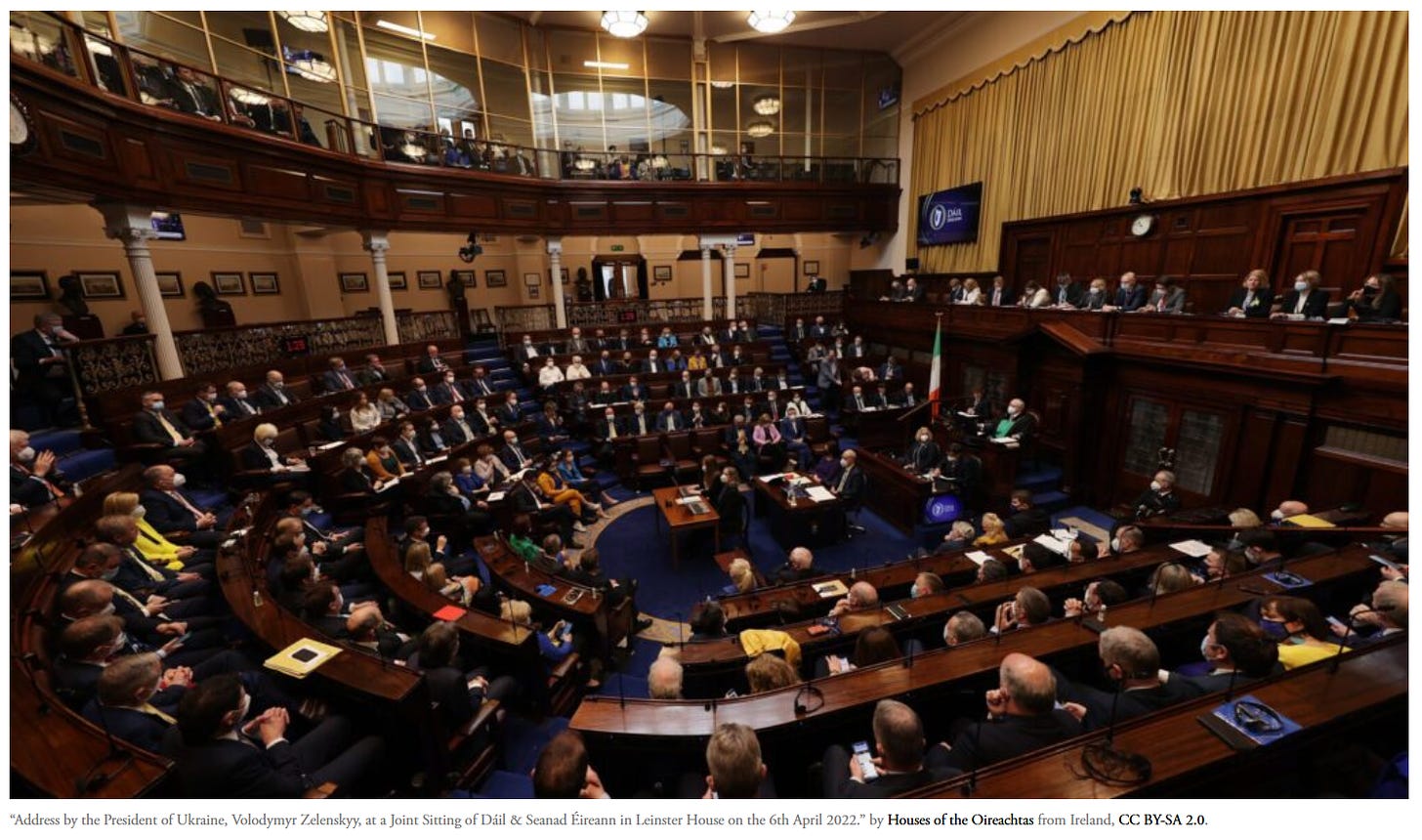
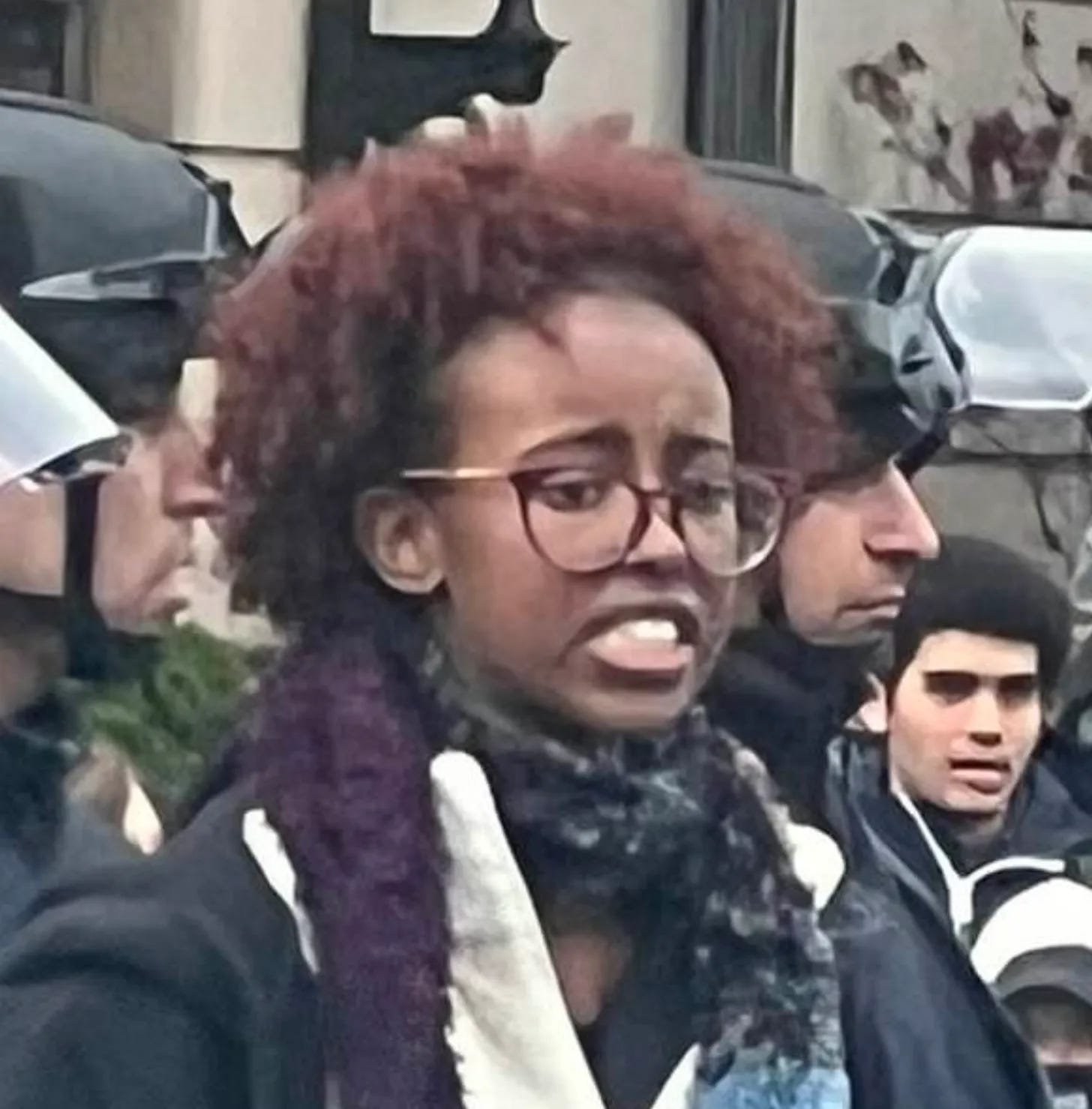


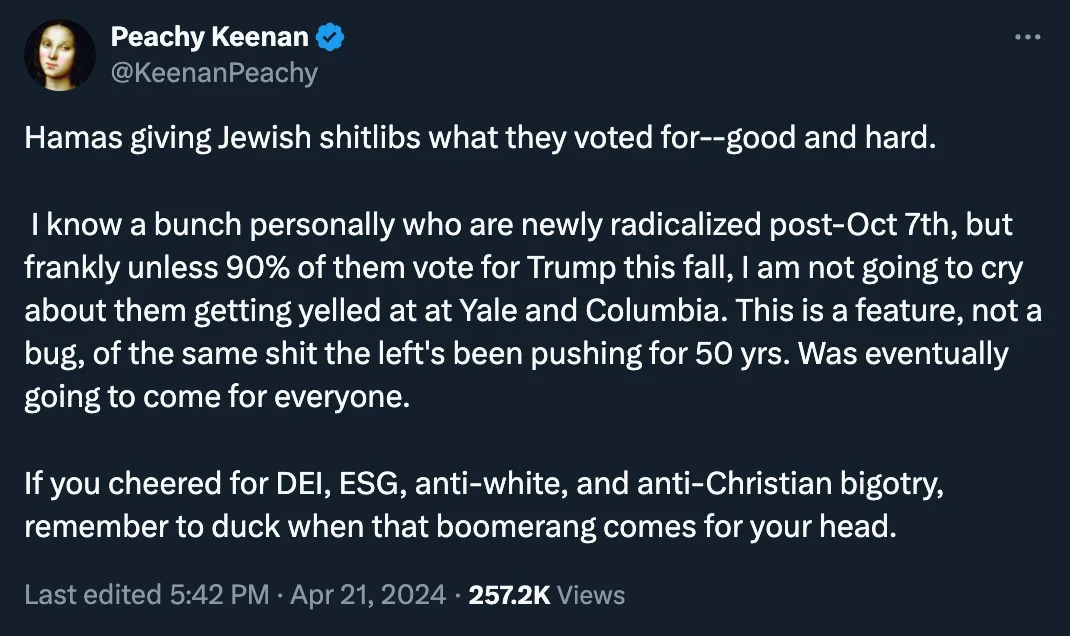

It's a gorgeous day outside, so I am gonna go step out for a bit. Enjoy your weekend, everyone.
Edited sub-header from "superconductor" to "semiconductor".
mea culpa